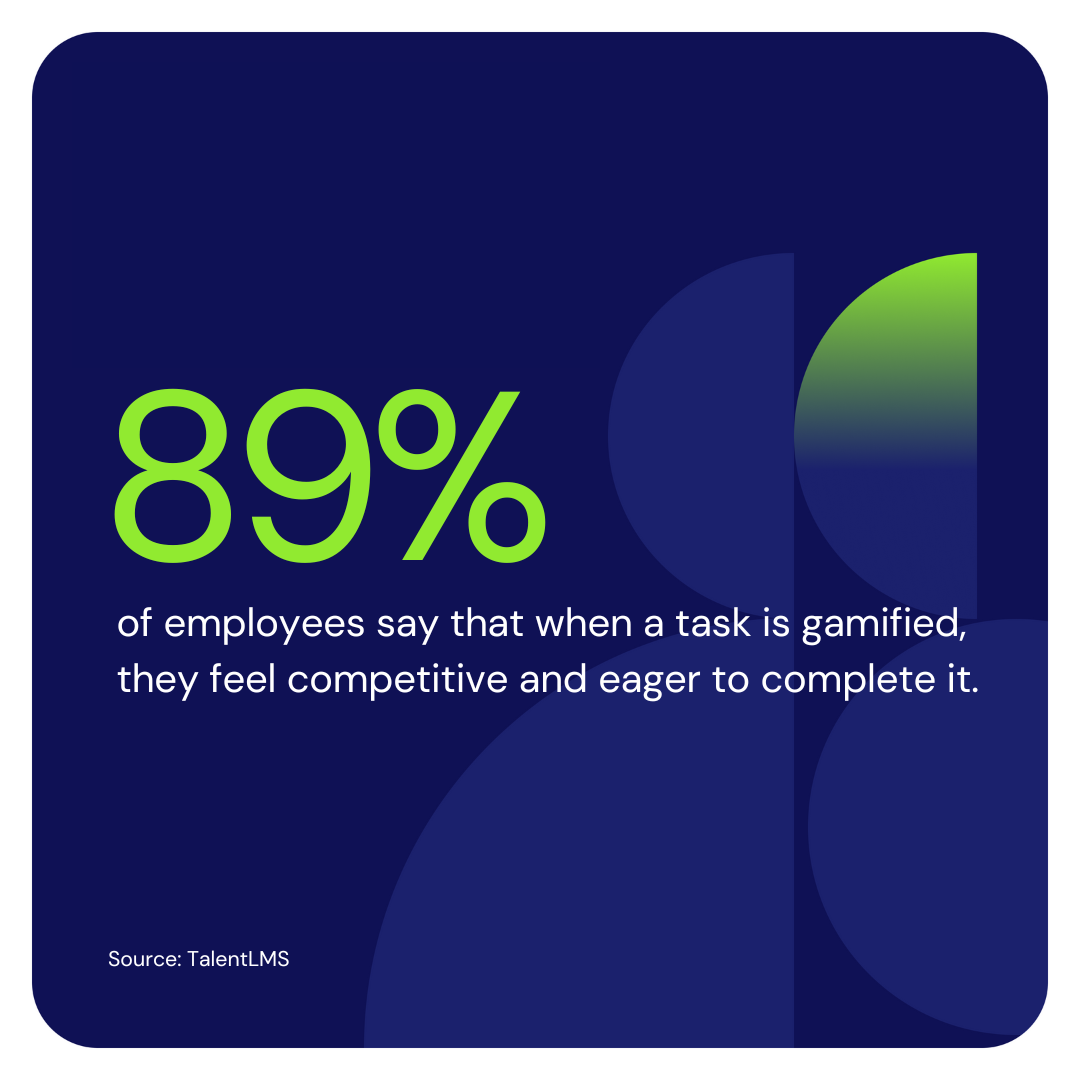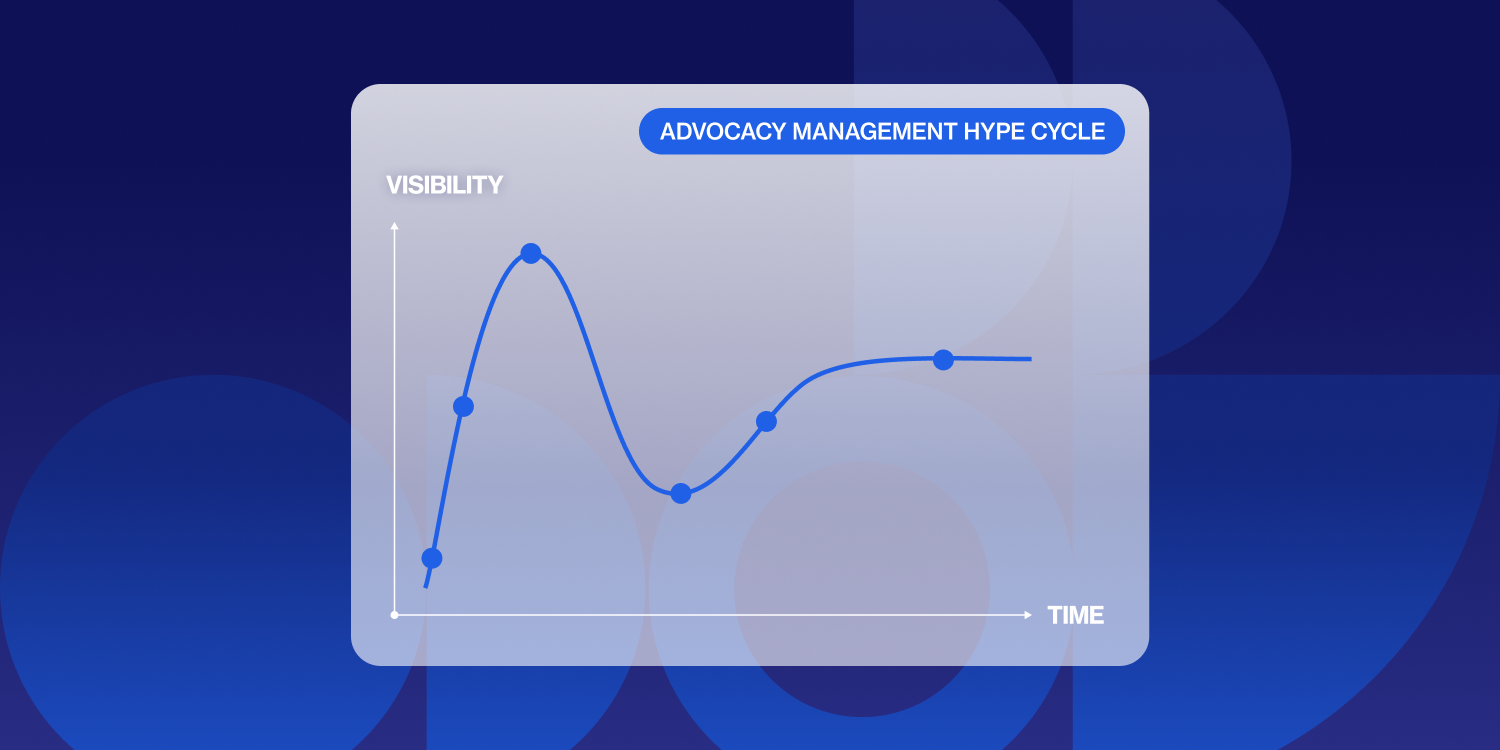
Mastering employee advocacy program management: a roadmap to long-term success
Launching an employee advocacy program is one of the most exciting and impactful steps a B2B marketer can take. The promise is enticing: transforming your employees into powerful brand ambassadors, amplifying your social reach, and fostering deeper and authentic engagement with your audience.
But here’s the reality—after the initial buzz, challenges inevitably arise. Advocates may lose motivation, participation might plateau, and you’re left wondering: Am I doing this right?
The good news is you’re not alone. These ups and downs are not signs of failure—they’re part of a predictable journey we like to call at Oktopost the
Advocacy Management Hype Cycle:
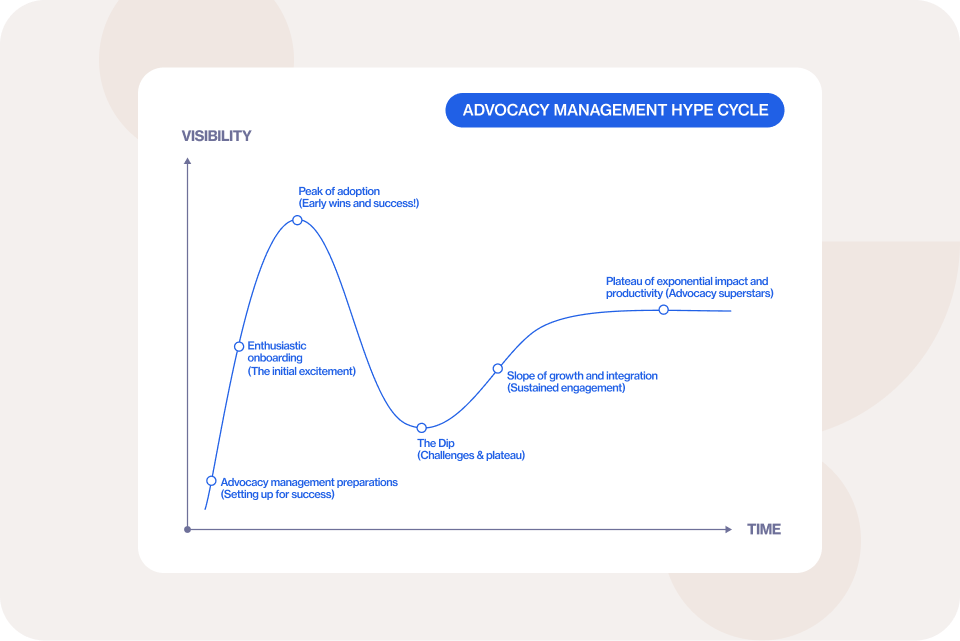
Advocacy Management Hype Cycle
This cycle outlines six distinct stages that every advocacy program manager goes through, from the excitement of onboarding to the sustainable impact of advocacy superstars.
Understanding this cycle is the key to managing your program effectively and ensuring long-term success. By anticipating challenges, celebrating wins, and adapting strategies along the way, you can turn your B2B advocacy program into a well-oiled machine that consistently delivers measurable results.
In this blog, we’ll walk you through each stage of the hype cycle, offering actionable insights and tips to help you navigate the journey. Whether you’re just starting out or looking to reignite a plateaued program, this framework will give you the clarity and confidence to succeed.
Let’s dive into the 6 Stages of the B2B Employee Advocacy Management Hype Cycle and see how you can transform your advocates into brand-building superstars.
Stage 1: Advocacy management preparations
Before launching your employee advocacy program, preparation is everything. This phase is your opportunity to lay a solid foundation, ensuring that when the program goes live, it runs smoothly and makes a strong first impression. You only get one chance to launch successfully, so investing time and effort here will set the tone for long-term success.
What happens
In this stage, you focus on setting up tools, securing stakeholder buy-in, selecting advocates for pilot or an initial launch, and aligning your program goals with broader business objectives. It’s about getting everyone on the same page—your advocates, leadership, and supporting teams like HR.
Why it matters
A shaky start can derail momentum before it even begins and first impressions are everything. By carefully planning and organizing this stage, you can ensure advocates feel supported and excited to participate. Additionally, clear goals and metrics provide a roadmap for measuring the program’s impact, making it easier to demonstrate ROI down the line.
Key actions
- Collaborate across teams: Work with HR to incorporate advocacy into the onboarding process for new hires. Align with leadership to secure buy-in, maybe start with a pilot and emphasize the program’s role in driving business objectives like brand visibility, social selling, or lead generation.
- Prepare advocates: Identify employees who are enthusiastic, socially active, or influential in their roles to join the initial program. Personally connect with these advocates on social media to build rapport and engagement.
- Set up the right tools: Configure your advocacy platform, like Oktopost, with Leaderboards, gamification, and content categories (e.g., topics or campaigns). Enable integrations with tools like Slack or Microsoft Teams to streamline communication and updates.
- Define metrics and goals: Establish KPIs like shares, clicks, engagement, or traffic driven by advocacy.
Plan how you’ll report on performance to stakeholders to showcase value early and often. - Prepare for rewards and recognition: Create a budget for monthly or quarterly incentives to motivate advocates.
Plan recognition strategies, such as spotlighting top advocates in internal communications or team meetings. - Establish guidelines and policies: Develop or refine your social media policy to provide advocates with clarity and confidence. Share guidelines on brand voice, hashtags, and the types of content they’ll be sharing.
Pro tip
Encourage employees to connect multiple social profiles (e.g., LinkedIn and X) to maximize their reach and allow for more diverse content-sharing opportunities. By the end of this phase, you’ll have a strong launch plan, an excited group of advocates, and clear goals to measure your success. With everything in place, you’re ready to move on to the next stage: onboarding and igniting the initial excitement.
Stage 2: Enthusiastic onboarding
Congratulations—you’re ready to launch! This is the phase where your employee advocacy program comes to life. Your advocates are introduced to the program, equipped with the tools they need, and motivated by the possibilities. The energy is high, and this momentum is your opportunity to set the tone for continued participation and excitement.
What happens
Teams are onboarded, tools are activated, and advocates take their first steps in sharing content. This is where you show them the value of advocacy—not just for the organization, but for their own professional growth and personal brand.
Why it matters
The onboarding experience can make or break your program. A smooth, exciting introduction fosters trust and enthusiasm, while a disorganized or unclear process may discourage participation. Your goal is to make it easy, valuable, and fun for your advocates to get started.
Key actions
- Host a memorable kick-off event: Organize a launch event or webinar to introduce the program, showcase its value, and answer questions. Share success stories from other companies or teams to inspire advocates.
- Equip advocates with resources: Provide quick-start guides, FAQs, and training videos on how to use the advocacy platform. Share initial content on the Advocacy Board so they can start sharing right away.
- Encourage active participation: Highlight the benefits of the program, like building their personal brand, gaining industry recognition, and expanding their professional network. Provide advocates with relevant hashtags, brand voice guidelines, and tips for writing authentic posts.
- Offer personalized training: Host 1:1 training sessions for hesitant or less tech-savvy advocates.
Help employees connect multiple social accounts (e.g., LinkedIn and X) to maximize their reach. - Celebrate early wins: Recognize early adopters during team meetings or in internal communications to encourage others. Share stories about how their advocacy is already making an impact—whether it’s through increased post engagement or positive feedback.
- Reinforce key guidelines: Reiterate your social media policy to ensure advocates feel confident and aligned with company expectations. Provide examples of posts that align with the brand voice and messaging.
Pro tip
Create a sense of community among advocates by setting up a dedicated chat or channel (e.g., Slack or Teams) where they can ask questions, share ideas, and celebrate wins together. By the end of this stage, your advocates should feel excited, supported, and ready to participate. With the groundwork laid, it’s time to transition into the next phase: testing the waters and achieving those all-important early wins.
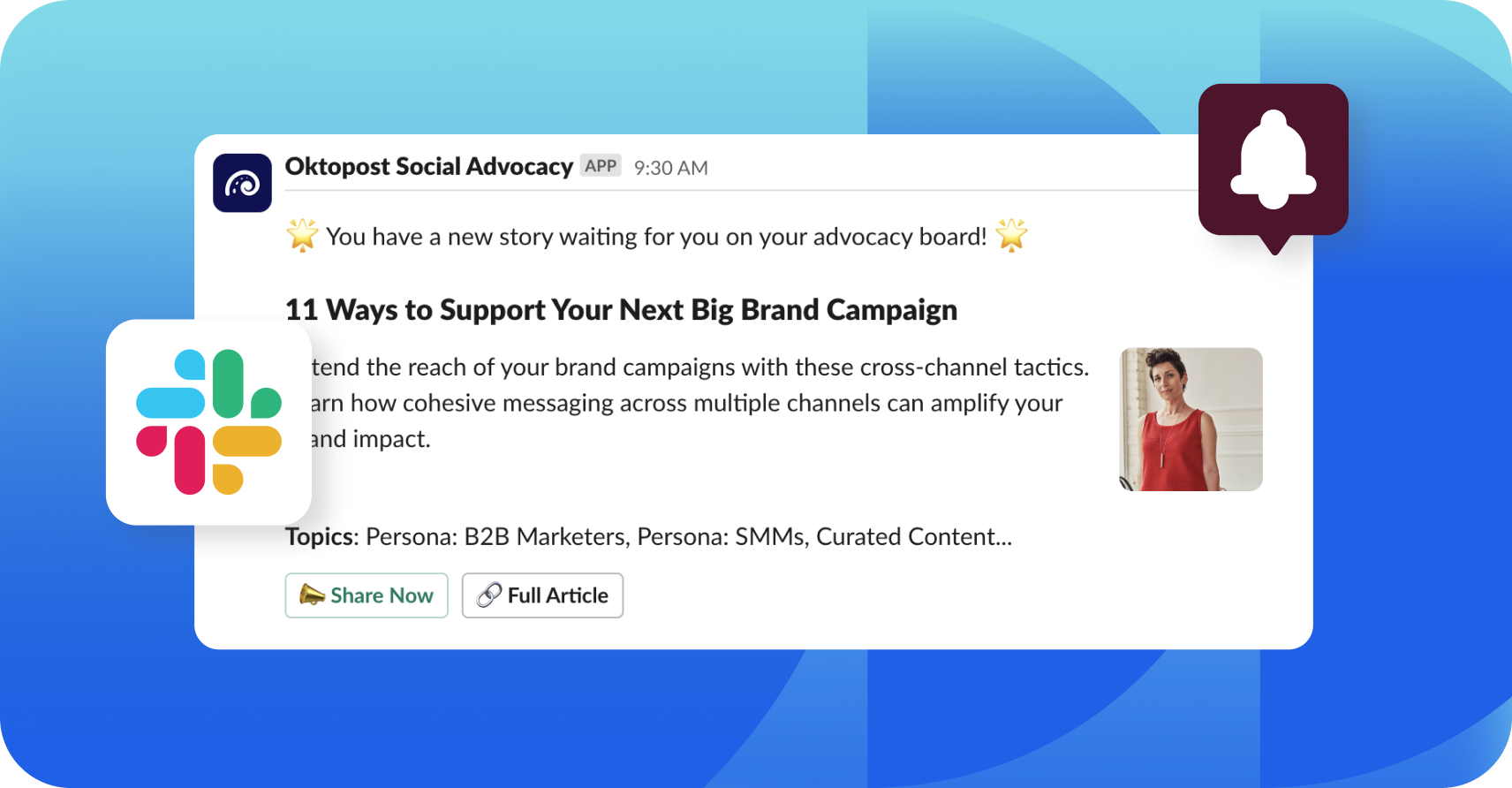
Recommended for further reading
Stage 3: Adoption & early wins
With the program officially launched, your advocates begin exploring their roles and sharing content. This phase is where the excitement from onboarding translates into action. Advocates start to see tangible results, like engagement from their networks and recognition for their efforts. These small but meaningful wins are critical for building momentum and reinforcing participation.
What happens
Advocates begin sharing content, experimenting with their tone, and learning how their posts resonate with their audiences. Early signs of success, such as likes, comments, or a spike in social activity, fuel confidence. At the same time, advocates may encounter minor hurdles, like uncertainty about what to share or how to maintain consistency.
Why it matters
This stage is pivotal because it sets the precedent for long-term engagement. Early wins demonstrate the value of the program, both for advocates and the organization. Addressing challenges early on ensures that minor setbacks don’t snowball into disengagement.
Key actions
- Celebrate wins: Share success stories to showcase the impact of advocacy on both personal and professional levels. Highlight metrics like engagement rates, shares, and impressions from top-performing posts.
- Provide ongoing support: Offer weekly tips or best practices for creating engaging posts. Create a space where advocates can ask questions, share experiences, and seek guidance.
- Incentivize participation: Recognize active advocates with rewards, such as gift cards, shout-outs in team meetings, or leaderboards that gamify the experience. Offer tiered rewards for consistent participation to keep advocates motivated.
- Address challenges proactively: Monitor participation rates and engagement metrics to identify potential roadblocks.
Provide feedback or additional training to advocates who may need help finding their voice or navigating the platform. - Share impact data: Show how their contributions are driving results, such as increased website traffic, event registrations, or brand visibility. Use visualizations like charts or graphs to make the data accessible and compelling.
- Keep content fresh: Regularly update the Advocacy Board with diverse and shareable content tailored to different audiences. Encourage advocates to suggest content ideas or share topics they’re passionate about.
Pro tip
Make advocacy feel personal by connecting individual wins to business goals. For example, share how a single post led to a meaningful interaction with a prospect or drove traffic to a key campaign.
By celebrating wins and addressing challenges, you’ll build the confidence and enthusiasm needed to sustain participation. The next stage is where things get trickier—the inevitable dip in excitement and engagement—but with the right preparation, you can navigate it effectively.
Stage 4: The dip in excitement and engagement
It happens to every advocacy program: the initial excitement starts to wane, and participation levels plateau. Advocates who were once enthusiastic about the program might feel less motivated, forget to log in, or struggle to find content that resonates with their networks. While this phase may feel discouraging, it’s a natural part of the hype cycle—and an opportunity to reignite enthusiasm and refine your approach.
The dip isn’t a failure—it’s a turning point.
What happens
Momentum slows, and advocates may face challenges such as a lack of time, uncertainty about what to post, or skepticism about the program’s impact. Without intervention, the program risks losing its steam, but with the right strategies, you can re-engage participants and remind them of the program’s value.
Why it matters
How you handle the dip determines whether your program stabilizes, grows, or fizzles. By addressing the underlying causes of disengagement and refocusing on your advocate’s success, you can reignite excitement and establish a sustainable rhythm for participation.
Key actions
- Reignite excitement: Launch a mid-cycle campaign or challenge to renew energy and focus. Introduce new incentives, like themed rewards, contests, or exclusive perks for active advocates.
- Simplify participation: Refresh the Advocacy Board with diverse, ready-to-share content that speaks to employee interests.
Provide pre-written posts with customizable elements to make sharing quicker and easier. - Showcase impact: Share program performance data to highlight its success and impact. For example, show how advocacy has driven traffic, engagement, or even leads. Create case studies or internal stories about advocates whose posts led to tangible business results.
- Provide additional training: Host office hours or 1:1 coaching sessions to address challenges, retrain on tools, or review personal social media growth. Revisit advocacy goals and provide tips on using tagging, mentions, and hashtags effectively.
- Re-engage with feedback: Survey advocates to understand their challenges, preferences, and suggestions for improvement. Act on feedback by refining processes, adding new features, or tailoring content.
- Increase visibility: Use internal communications to remind employees of the program’s purpose and celebrate success stories. Encourage team leads or managers to champion advocacy and lead by example.
Pro tip
Use the Oktopost Gamification Engine to your advantage by refreshing Leaderboards and adding new ways for advocates to earn recognition. Highlight weekly or monthly leaders to create friendly competition. By proactively addressing challenges and doubling down on engagement strategies, you can pull your program out of the plateau and prepare for the next phase: sustained growth and integration into your organization’s culture.
Stage 5: Growth & integration
After navigating the dip, your employee advocacy program begins to find its groove. Advocates consistently share content, and the program has become a regular part of their routine. At this stage, your focus shifts to scaling the program, refining your strategies, and integrating advocacy into the fabric of your company culture. Success becomes evident as you see growing participation, increased brand visibility, and a stronger connection between employees and the company’s goals.
What happens
Advocates are no longer just sporadically participating—they’re engaged and motivated. Sharing content becomes second nature, and your program begins to make a tangible impact on key metrics such as brand awareness, lead generation, and engagement. The advocacy program is no longer a “nice-to-have” but a core part of your social selling and marketing efforts.
Why it matters
Growth and integration are critical for ensuring the longevity and success of your program. As more employees participate, your advocacy efforts multiply, and you start to see broader organizational benefits, such as improved employee engagement, a stronger employer brand, and greater social proof for your products or services. This phase sets the stage for even further scaling and embedding the program into the company’s culture.
Key actions
- Gamify the experience: Enhance the competitive aspect by refining leaderboards, offering new rewards, and introducing tiered achievement levels. Recognize top advocates through a “Champion of the Month” spotlight or personalized rewards.
- Expand your content library: Continue to build a library of diverse, relevant, and easy-to-share content that speaks to the interests of different employee groups. Encourage advocates to contribute content ideas by suggesting advocacy content or sharing personal experiences that resonate with their social circles.
- Host peer learning sessions: Organize workshops or webinars where top advocates share their strategies and experiences with newer participants. Facilitate peer-to-peer learning to foster collaboration and build a sense of community among advocates.
- Provide regular updates: Send out monthly or quarterly reports highlighting the success of the program, including impact on website traffic, lead generation, event registrations, and more. Showcase stories of closed deals, sign-ups, or other business outcomes directly influenced by advocacy efforts.
- Make Advocacy part of your company culture: Integrate employee advocacy into regular employee engagement initiatives. Encourage leaders and managers to participate and advocate for the program themselves, reinforcing its importance across the organization.
- Promote cross-department collaboration: Ensure that advocacy efforts are aligned with other departments, such as sales and customer success. Cross-promote the program with your internal teams to increase visibility and encourage participation.
Pro tip
Track advocacy-related metrics closely and use data-driven insights to refine your approach. Look at engagement rates, referral traffic, and the number of leads generated to understand what’s working and what could be improved.
Sustained engagement is the key to taking your advocacy program to the next level. As your program becomes embedded into the culture, it’s time to move forward into the final phase: creating advocacy superstars who drive exponential results and showcase the true value of the program.
Stage 6: Plateau of exponential impact
At this stage, your employee advocacy program has truly matured. Advocates are not only engaged; they’ve become ambassadors for your brand—sharing meaningful, high-impact content that generates significant results. The program has evolved into a powerful marketing tool, with your top advocates now recognized as thought leaders within and outside the organization. These “advocacy superstars” wield an exponential influence that contributes to your brand’s growth, visibility, and lead-generation efforts.
What happens
As your program reaches its peak, the impact of advocacy becomes clear: increased brand awareness, more engagement, stronger connections with prospects and customers, and a clear ROI from social selling efforts. The momentum built during the previous stages now translates into substantial, long-term value. These top advocates aren’t just sharing content—they’re influencing decision-makers, boosting your company’s credibility, and creating tangible business outcomes.
Why it matters
The culmination of your program’s success is evident in the superstars that emerge. These advocates elevate the program and set an example for others, inspiring continued participation. Their influence extends beyond social media, driving new opportunities, leads, and even conversions. The growth of these individuals into thought leaders not only boosts the program’s impact but also helps solidify your company’s position as an industry leader.
Key actions
- Spotlight advocacy champions: Recognize top performers through internal and external communications—this can include case studies, blog posts, or social media shoutouts. Host exclusive events for your superstars, such as VIP webinars or recognition ceremonies.
- Leverage top advocate influence: Feature top advocates in leadership or customer success stories. Encourage them to speak at industry events or contribute guest posts, showcasing their expertise.
- Share program results widely: Present metrics and success stories to leadership to demonstrate the program’s ROI. Highlight key achievements such as increased website traffic, new leads, and customer engagement attributed to employee advocacy efforts. Use data to show the program’s exponential impact on the sales funnel, from awareness to conversion.
- Continue to innovate content: Refresh your content strategy to keep the program engaging and exciting for top advocates. Provide new formats, such as video content or interactive posts, to keep things fresh and encourage deeper engagement.
- Foster community among Superstars: Create a community for your advocacy superstars to network, share strategies, and collaborate. This can include dedicated Slack channels, group chats, or virtual events. Offer opportunities for them to influence the direction of the advocacy program by providing feedback on content, tools, and rewards.
- Build long-term relationships: Engage top advocates in strategic business conversations—whether it’s product feedback or customer testimonials—to continue building their connection to the brand. Encourage advocates to become brand ambassadors in ways that align with their personal interests and professional expertise.
Pro tip
The key to sustaining exponential impact is to continue nurturing your advocacy superstars. As their influence grows, so does the program’s potential. Keep them motivated with personalized rewards, exclusive opportunities, and ongoing recognition. By this stage, your employee advocacy program is no longer just a marketing initiative—it’s a driving force behind your company’s brand awareness, engagement, and revenue growth. The results of these top advocates speak for themselves, proving that advocacy, when fully realized, can deliver exceptional, long-lasting results.
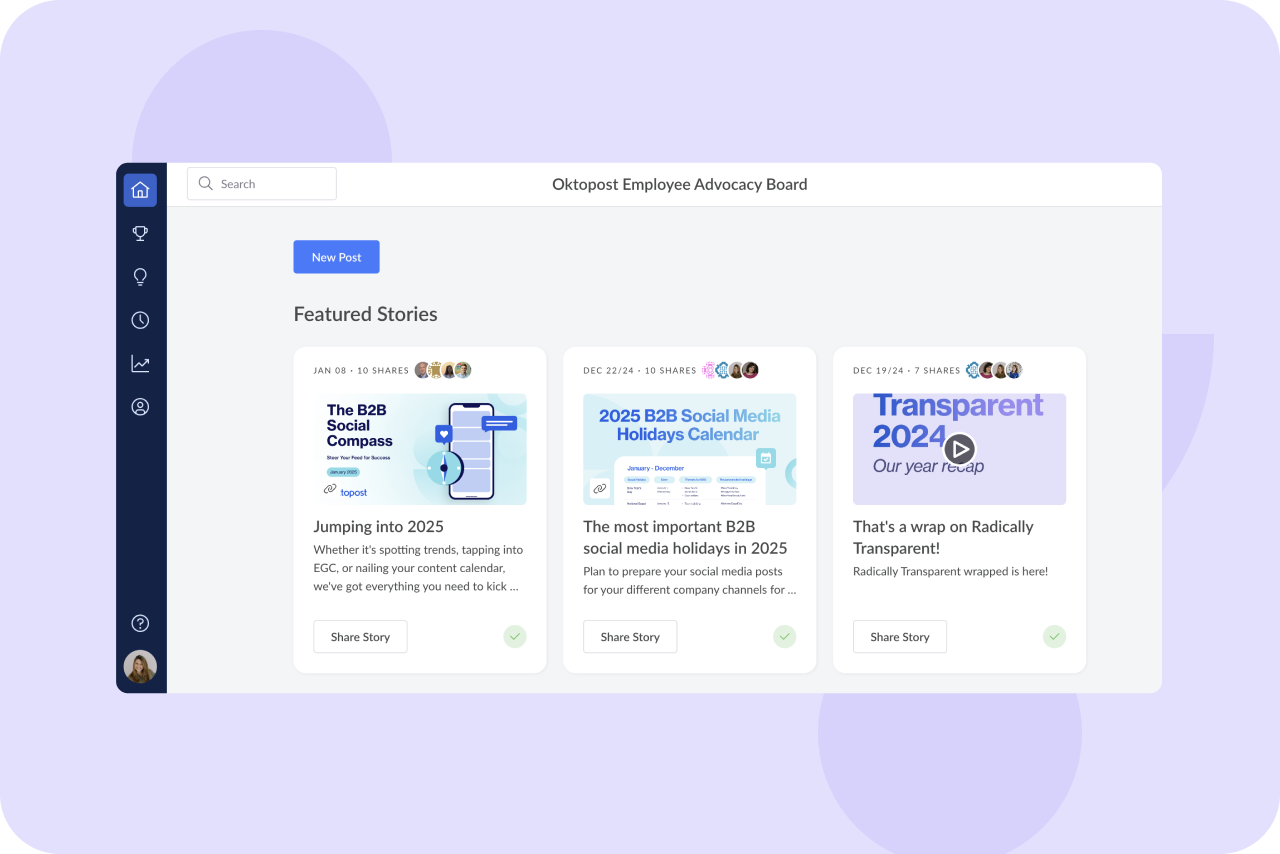
Oktopost Employee Advocacy Board
Navigating the Advocacy Management Hype Cycle
Launching and managing an employee advocacy program can feel daunting, especially when you’re trying to move from initial excitement to long-term success. However, by understanding the Advocacy Management Hype Cycle stages, you can better anticipate the ups and downs and plan accordingly.
Whether you’re in the preparation phase, struggling through the dip, or celebrating the success of your advocacy superstars, remember that every step is part of the journey toward creating a sustainable, high-impact program.
As a B2B marketer, keeping your eye on the big picture is essential. Your program’s success doesn’t happen overnight, but with careful planning, ongoing support, and a commitment to fostering engagement, you can confidently move through each stage.
Don’t be discouraged by the challenges or plateaus that may arise along the way. Embrace the hype cycle for what it is—a guide to help you stay focused, organized, and motivated as you work to unlock the full potential of your employee advocacy program.
With the right strategies in place, your advocacy efforts can have an exponential, lasting impact on your brand’s reach, engagement, and growth.
